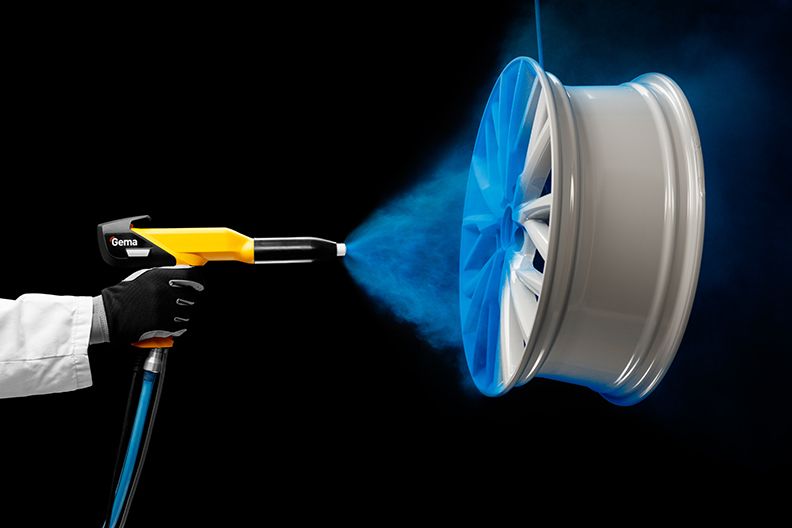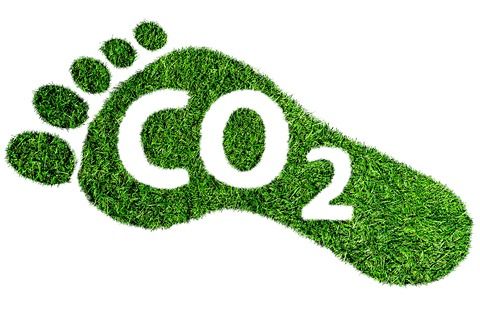Introduction
In the 19th century, by the discovery of the extraction of aluminum, has started a new era in engineering. Recent technological developments have opened a way to enhanced aluminum alloys. Consequently, aluminum alloys find a wide application area in the industry especially in transportation. Since aluminum provides high corrosion resistance, has a high strength to weight ratio and low melting point, which ensures recyclability. Aluminum is the 3rd lightest metal in the earth crust, so its low theoretical density results in higher specific strength of aluminum than steel. Corrosion resistance in the ambient atmosphere is another engineering design parameter that encourages the use of aluminum, because of the passive oxide layer that composed itself. Even though there are numerous positive parameters listed for aluminum, none of the metals that are manufactured cannot be used as they are produced. One of the important treatments is done to make surface appearance better and improve the quality of the material to enhance corrosion resistance and surface quality, hardness and wear properties of the engineering materials, which is called surface treatment in the engineering terminology. Surface treatment of aluminum is divided into two distinct subgroups regarding their application method. second group of the surface treatment consists of passivation, powder coating, and anodising. Among surface treatments anodising is the most applicable and beneficial method, and in the recent research surface treatments will be compared and the reason for wide application of anodising will be argued.
Powder Coating
Powder coating is a common technique for surface treatments of many materials, including aluminum. The mechanism of this process relies on applying the dry mixture of resin and pigment through an electrostatic gun to coat the material surface. Powder coating is an option for conventional painting since it offers more protection to the material and is relatively eco-friendly in contrast to the liquid painting. Even though powder coating is better than traditional coating, it is inadequate against anodization. The coating layer provided by powder coating cannot adhere to the surface as well as the oxide layer, which results in the peeling of the layer quickly. Since the coating layer cannot adhere as well as the oxide film to the material's surface, oxidizing agents have a higher chance of finding a way to leak in. Thus, even a small amount of water present within the coating and layer will result in corrosion to take place. That is called crevice corrosion, which can be considered the most dangerous corrosion type because observation of the propagation of corrosion is not possible. Moreover, it has been claimed that powder coating has no volatile organic compounds (VOCs') or is not harmful to the environment. But powder coating constituents involve within the VOCs' somewhat. According Karel Kellens et al. study, it is reported that by using the Europe ReCiPe H/A life cycle assessment method, the environmental impact of the powder coating was determined. Consequently, the ecological impact level was found to be the midpoint level. Midpoint level categories, as indicated in the study, are fossil depletion, climate change ecosystems, particulate matter formation, human toxicity, and climate change human health. (2015, p. 423) As a result, although powder coating is said to be eco-friendly, the byproducts of the process are not environmentally friendly.

Hexavalent Chromium Coating and Trivalent Chromium Passivation
In recent years, hexavalent chromium salts have been faced with strict regulations by Registration, Evaluation, Authorisation, and restriction of chemicals (REACH). REACH is a constitution that regulates and prevents the chemicals that threaten human life. According to REACH, hexavalent chromium is classified as carcinogenic and mutagenic, unlike trivalent chromium. The industrial use of hexavalent chromium was stopped on 21th of September 2017 by REACH because of its severe negative impact on the environment and human health. As WHO stated, hexavalent chromium is considered to be carcinogenic to lung, nasal, and sinus cancers. Since hexavalent chromium can easily pass the cell membranes by using sulfate transport systems, once the hexavalent chromium is absorbed by the cell membrane, the oxidation to tetravalent or pentavalent chromium might occur. These intermediate products can cause health abnormalities. Besides health problems, hexavalent chromium also causes environmental problems. Leakage of hexavalent chromium waste results in contamination of municipal water or underground water sources, which also threatens human life. The contamination of groundwater sources also affects the soils. Consequently, alternative technologies that prioritize human life are developed to manufacture hexavalent-free chromium coating products. However, in the aviation industry, hexavalent chromium coating is still used. On the basis, trivalent chromium plating is done following the same process routes, with slight operational change. When hexavalent and trivalent chromium products are compared, the drawback of trivalent coating is obvious. According to table 6.4.1A, which is given in the Toxics Use Reduction Institute University of Massachusetts Lowell work, many parameters are similar, but the maximum coating thickness that can be achieved by using trivalent coating is less than hexavalent coating. (2006. Chapter 6) Furthermore, it is concluded by Flink and Västerlund that the 6xxx series of aluminum coated by trivalent chromium has a lower contact angle in contrast to hexavalent chromium conversion, and while the hexavalent chromium coating is thick and compact, trivalent chromium coatings are found to be thin and do not have as high coverage as hexavalent coatings. (2016) Moreover, the amount of water used within the anodizing bath is higher than hexavalent and trivalent, which makes chromium baths less sustainable than anodizing process. From the overall analysis, it can be emphasized that using chromium compounds in the metal coating can be very detrimental to the environment and threaten human life by contaminating municipal water systems or polluting soil. Briefly, neither hexavalent chromium nor trivalent chromium coatings contribute to the green environment.
Recycling of Aluminum
In the recent decade, concerns about global warming have increased. From the aluminum point of view, recycling and waste reusing have come up. Since aluminum alloys have broad application areas in the industries such as automotive, food packages, beverage cans, and aviation, secondary aluminum production gains importance. Besides, increasing the recycling rate of aluminum is not just correlated with the source of scrap. Primary production of aluminum is an energy-costly process and less environmentally friendly. As a result, secondary aluminum's economic and environmental contributions make it attractive. Recycling also helps to eliminate landfill occupation and reduces climate change issues for the industry. In Addition, anodized aluminum increases the aluminum scrap quality because no other elements must be removed. When extra layers are composed on the surface, they should be removed before the process; Thus, excess waste is created. Consequently, anodized aluminum enables easy recyclability, which can be realized with endless cycles without extra process parameters. When primary and secondary aluminum production is compared, as stated by Das et al., production from its ore requires 48 kWh of energy and 12 kg of carbon dioxide emission for each kilogram of metal produced. On the other hand, recycling aluminum only requires 2,8 kWh of energy and 0.6 kg of carbon dioxide emitted to the environment from each kilogram of metal produced. Therefore, energy consumption and emission of green gasses are reduced by approximately 95%. (2010, p. 22) As indicated in Aluminum Industry Vision, electrical energy that is consumed by aluminum can be considered as an "energy bank." (2001, p. 17). Compared with other materials such as steel and polymers, recycling aluminum and its alloys is effortless. Moreover, the quality that is obtained from recycled aluminum is higher. As steel scraps are recycled, the quality of steel is decreased; thus, obtaining a certain quality is challenging. When polymers are considered, the primary reason that causes global warming since they are non-degradable in nature. Furthermore, some types of polymers can never be recycled. Therefore, recycling aluminum is more feasible, energy savings are higher, and carbon dioxide emissions are lower, which makes the usage of aluminum reasonable. In brief, aluminum produced by conventional metallurgical extraction techniques embeds electrical energy into the material. In contrast to primary aluminum, aluminum manufactured from secondary resources contributes positively to the environment and energy usage.

Conclusion
In the end, in contrast to other surface finishes, anodization offers more precise solutions to recent environmental issues and improves surface quality by enhancing, which is composed natural oxide layer by aluminum itself. First of all, anodization plants complete the overall process without chemical loss. Pre-treatment step, which threatens the environment, does not involve anodizing; thus, significant recovery rates are obtained for wastewater formed during anodization. Moreover, after the surface treatment, harmful byproducts do not form, such as carbon dioxide, solvent emissions, or volatile organic compounds. AAC emphasizes that "anodizing is a water-based process and uses no volatile organic compounds (VOCs)." (n.d.) In anodizing usage of vehicle solvents, carrier resins, pigmentation, or halogenated hydrocarbons do not take place. However, the wastewater of anodization does not contain any hazardous waste and minerals produced. In Addition, aluminum-rich wastes are eco-friendly and valuable in some pollutant-removing processes. Another point is that anodizing takes advantage of the base metal to increase the thickness of the oxide layer, thereby creating a strong and corrosion-resistant coating achieved in the cleanest way. Also, anodizing improves the products' life and enhances the ability to recycle. Besides, the oxide layer after the anodizing contributes to mechanical properties such as wear resistance, hardness, and durability. Other positive help of anodizing is color stability, aesthetic looking, and cost-effectiveness. Among them, the most crucial contribution is offering health and safety. From the overall highlighted points, which are discussed with their proofs, it can be concluded that anodization is the most proper surface treatment technique for aluminum; as citizens living today, increasing the use of anodization should be one of the steps to be taken in order to leave a greener world for our children and young people to live in in the future.
References
[1] Kellens, K., Paraskevas, D., Dewulf, W., & Duflou, J. R. (2015). Environmental comparison of metal coating processes. Procedia CIRP, 29, 420-425.
[2] University of Massachusetts Lowell. (2006). Five Chemicals Alternatives Assessment Study. Chapter 6. The Massachusetts Toxics Use Reduction Institute. pp. 294-350.
[3] Västerlund, E., & Flink, R. (2016). Analysis and characterization of environmental friendly trivalent chromium passivation of aluminum alloys.
[4] Das, S. K., Green, J. A. S., & Kaufman, J. G. (2010). Aluminum recycling: economic and environmental benefits. Light Metal Age, 68(1), 42.
[5] Aluminum Industry Vision. (2001). Sustainable Solutions for a Dynamic World. The Aluminum Association. p. 17.
[6] Aluminum Anodizers Council. (n.d.). Anodizing and the Environment.
https://www.anodizing.org/page/anodizing-environmental-advantages